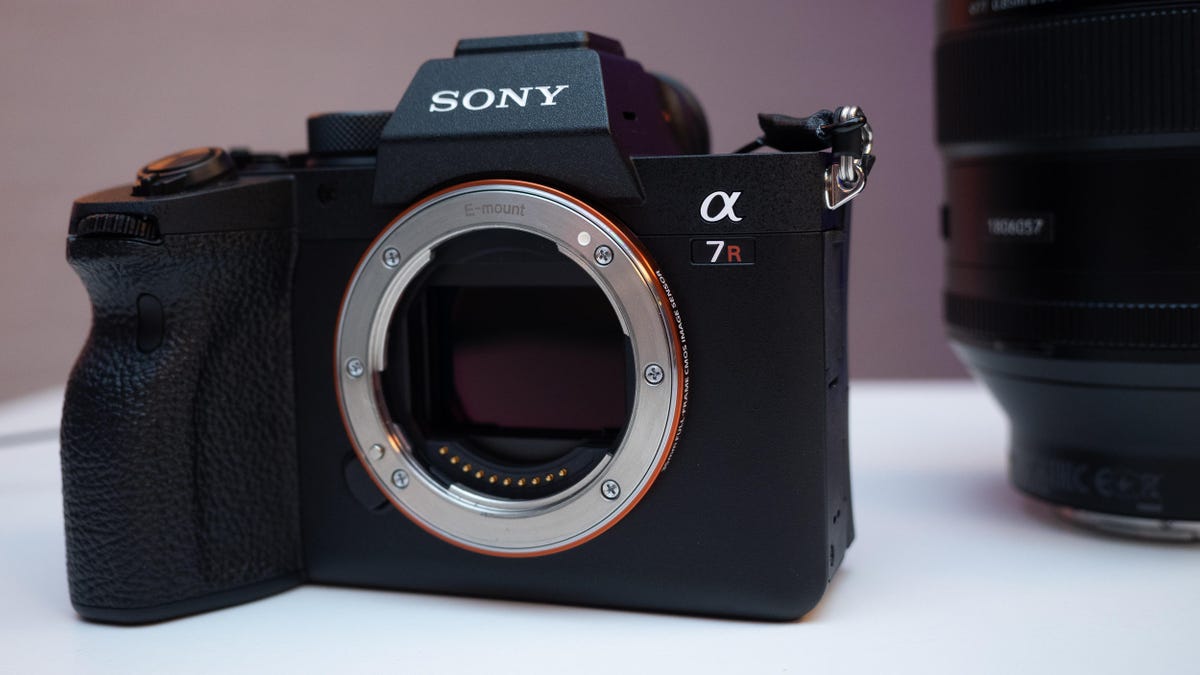Sony A7R IV packs new 61MP, 15-stop sensor to take on medium format
More pixels and improved autofocus without sacrificing speed or battery life? Count me in.

An improved grip is one of the changes made to the body.
The update to its veteran A7R series, the A7R IV, boasts Sony's own medium-format-class, 15-stop full-frame 61-megapixel BSI sensor to take on inexpensive medium-format camera competitors like Fujifilm's GFX 50S. And it comes in at a lower price than the entry-level medium formats as well: It will be $3,500 when it ships in September in the US. (Directly converted, that's about £2,820 and AU$4,990.) It's slated to ship in Europe earlier, in August.
With the new sensor come expanded phase-detection autofocus points -- 567, up from 399 -- covering 74% of the scene, and in its 26MP APS-C crop mode the 325 points cover the whole scene, which should mean better AF on the edges of the frame. However, you don't need to use crop mode to hit its 10fps continuous-shooting speed; it can maintain that at full resolution with AF and autoexposure for up to 68 images (7 seconds), though it can run longer at the lower resolution. It seemed to hold up while I shot raw as well.
The nice thing about the high resolution is that when you scale down the images it can cover a lot of flaws, including slight blur problems and high-ISO noise suppression artifacts.
The full-resolution JPEG version of this shot -- at ISO 1000 with too large an aperture and too slow a shutter speed -- is not great, but cropped and scaled it's serviceable.
That's also important because despite Sony's boast that it has 59 lenses that will work on the camera thanks to its one-mount-for-all strategy, to properly resolve for such a high-res sensor I'm guessing it will require an expensive FE-mount G Master, Zeiss or other high-end lenses. If you're scaling down, you can probably get away with a cheaper lens, or if you crop to APS-C you can use one of the somewhat less expensive but high-quality E-mount models while you save your pennies.
And it's not just about sharpness. The clarity of the high-end lenses is probably essential for capturing the entire tonal range, as well. Without access to the raw-processing software yet I'm unable to really judge the tonal range for stills, but the JPEGs did a pretty good job with detail in underexposed black-on-black patterns and the bright white areas on the bird.
Sony refined the controls on the back.
Sony also added real-time tracking Eye AF for video; in the brief time I had with it I was pretty impressed. As you'd expect, the camera shoots 4K video (downsampled from 6K) and supports S-Log3 and HLG profiles. Notably, there's a new Multi Interface Shoe that adds support for its digital audio interface: Its updated XLR adapter and its new mic perform the analog-to-digital conversion in hardware and send the digital audio to the camera.
An exposure compensation dial lock! An exposure compensation dial lock! Be still my heart.
However, despite upgrading from one to two UHS-II SD card slots -- yay! -- it still takes a while to write the buffer to the card. It doesn't interfere with shooting, but if you need to quickly review, that can hold you up. And I'm still waiting for Sony to ditch the AVCHD file structure that necessitates that annoying "Creating database" pause every time you stick a new card in.
The design remains fundamentally the same as the previous model, though there are some control tweaks -- a redesigned joystick on the back and the addition of a lock for the exposure compensation dial, for example. There are also some capability updates, including USB-C for tethered shooting and 5GHz Wi-Fi support, a higher-resolution (5.8 million dots) OLED EVF and improved weather sealing.
Even though the design changes weren't major, you'll still need to spring for a new vertical grip ($400) that holds two more batteries if you need it. The camera takes the same batteries, though, and has the same battery life.

